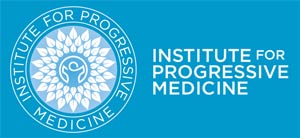
Superfood List
- Watercress – This may surprise many as it is not always the first food selected in the produce aisle. However, it is now the unrivaled superfood champion. Gram for gram, this mild tasting green contains 4 times more beta-carotene than an apple and 238% of the recommended daily dose of vitamin K. It is also very rich in anticancer phytonutrients. If you are less familiar with watercress, start adding it to salads, wraps and vegetable juices.
- Chinese cabbage – CABG which is also called Knoff or celery cabbage. This is very rich in calcium and iron and as a member of the cruciferous vegetable family also is anti-inflammatory, reduces heart disease and cancer.
- Swiss Chard – This is another favorite leafy green that contains at least 13 different antioxidants and has been used to prevent type 2 diabetes
- Beet greens – This is another compelling reason to buy organic beets. The beet itself is high in bioflavonoids, antioxidants and an excellent food for detoxification and liver support. Now we are reminded of the nutritional content of the leafy green that is attached to the beet, that sometimes gets overlooked. This is a wonderful green to add to a stir fry or your vegetable juice.
- Spinach – This is not likely a surprise as spinach has a tall reputation to live up to. Media has given spinach a well-deserved image of health and strength. Spinach packs a punch to vegetarians as a rich source of iron, folate and calcium. Spinach is an extremely versatile green that can be consumed raw, sautéed, steamed, juiced, and can be chopped and added to any soup, pilaf, or sauce.
- Chicory – This bitter green is a wonderful digestive stimulant. It has medicinal benefits to support healthy liver function, digestive health and cholesterol management.
- Leaf lettuce – Please don’t forget about leaf lettuce when you reach for the popular salad mixes. Red and green leaf lettuce have slightly different phytonutrients and should be combined for the strongest impact.
- Parsley – This green is packed with nutrients and should move from the side of the serving plate to the main dish and into the sides. It is very versatile and can be used as a fresh flavor to meat, chicken, fish or vegetable dishes. It is also a very effective juiced for a liver or heavy metal cleanse.
- Romaine lettuce – This lettuce is rich in folate, fiber and the whole B vitamin family.
- Collard Greens – This bitter green is familiar in many southern states, but is underutilized in California cuisine. It is a useful vegetable to add to your cholesterol lowering diet.
This list reinforces the nutritional mantra: be sure to eat your greens! Upon reflection of this list, all 10 foods are leafy greens. You might wonder where are some of your other favorite “superfoods” like kale, blueberries, avocado or wild salmon? Yes, these are all highly nutritionally dense foods that should be included in your diet liberally.
This study had very specific criteria that were used to evaluate nutrient density to determine these powerhouse foods. There are many other phytonutrients that pack a punch for anti-aging, anti-inflammation and cancer prevention.
However, this study might remind us about greens other than Kale, which has gained popularity in the restaurant industry and in the media. You can always rely upon the Nutritional Color Rule: look for the darkest color fruits and vegetables and be sure to have all 5 colors every day to ensure a diverse array of phytonutrients.
The CDC has brought to the forefront of our attention the value of prioritizing our dark, leafy greens and they key is to eat a diversity of greens to get the widest array of nutrients…. and please don’t forget the watercress.
Julie Kahn Harden ND LAc
